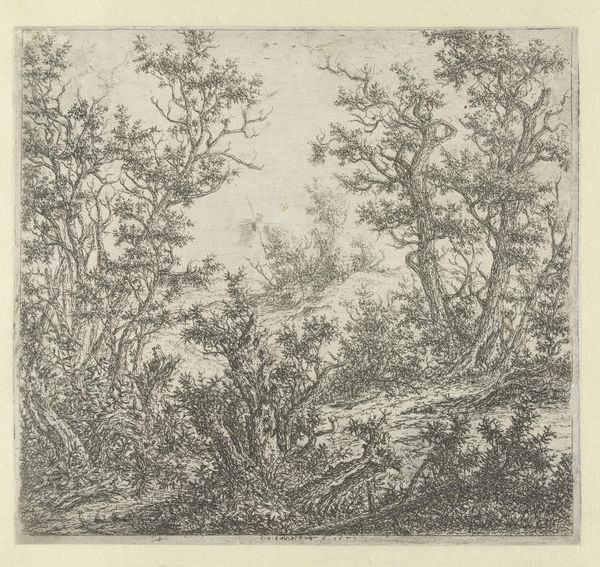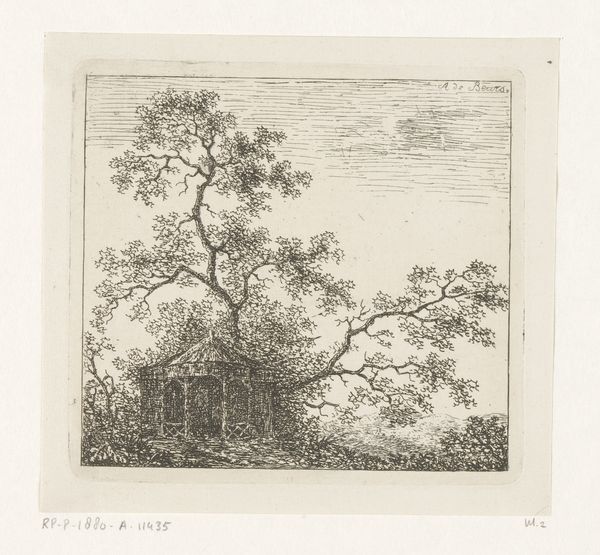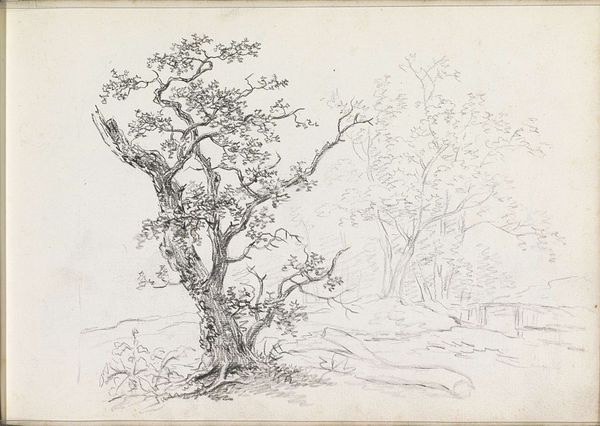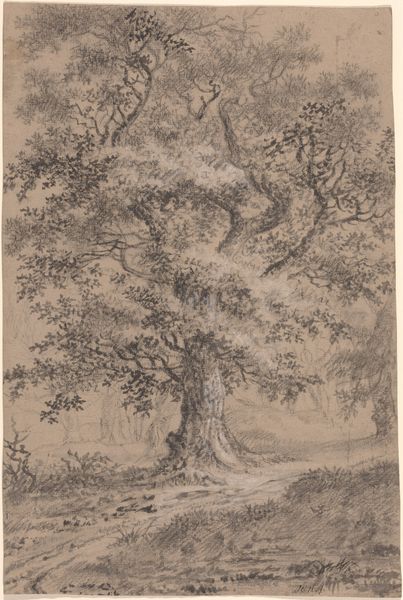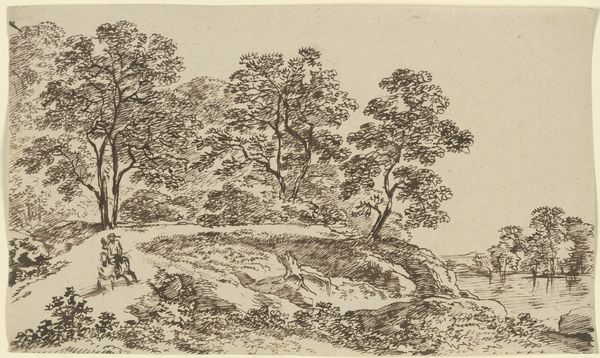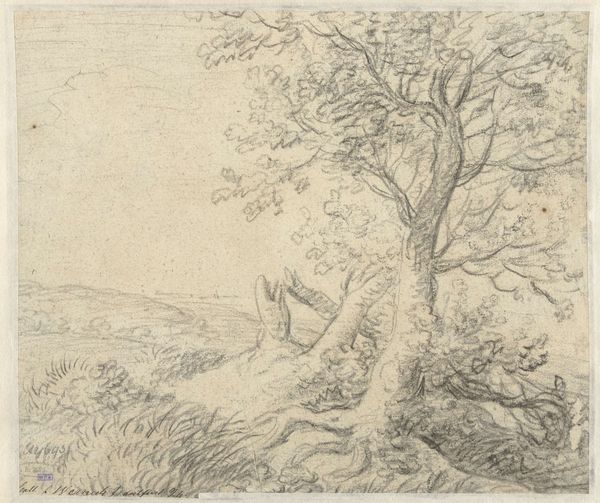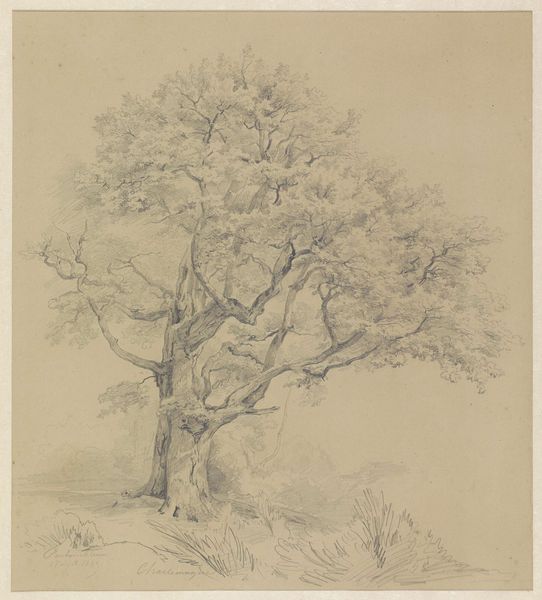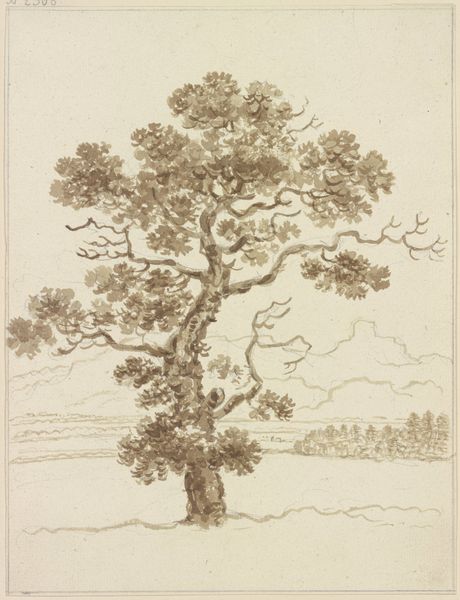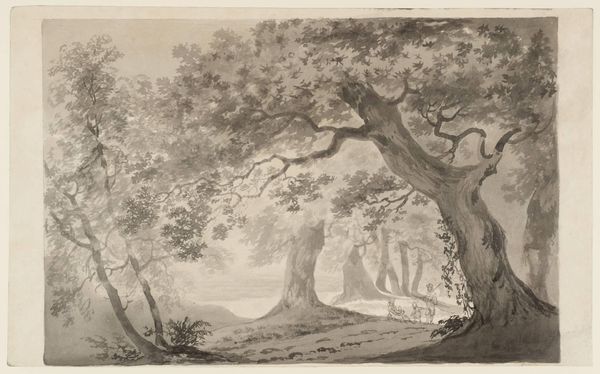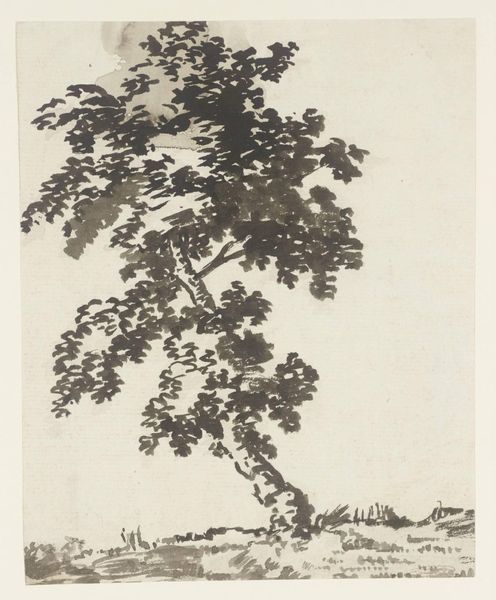
print, etching
# print
#
etching
#
landscape
#
etching
#
line
#
realism
Dimensions: height 83 mm, width 97 mm
Copyright: Rijks Museum: Open Domain
Johannes Janson created this landscape print, or "Boslandschap," using etching techniques sometime in the 18th century. Look closely, and you can appreciate the distinct quality of the etched line. Notice how it varies in thickness and depth, creating a range of tones and textures. This was achieved by applying an acid-resistant ground to a metal plate, then drawing through it with a needle to expose the metal. The plate was then submerged in acid, which bit into the exposed lines, creating grooves that would hold the ink. Janson's skill lies in his ability to evoke a sense of depth and atmosphere through the manipulation of line and tone. Consider how much labor was involved in the execution of this work, especially given its small scale. Prints like this were important in disseminating visual information, making art more accessible to a wider audience. By understanding the material processes behind this image, we can appreciate its role in the broader cultural landscape, challenging the traditional divide between art and craft.
Comments
No comments
Be the first to comment and join the conversation on the ultimate creative platform.
